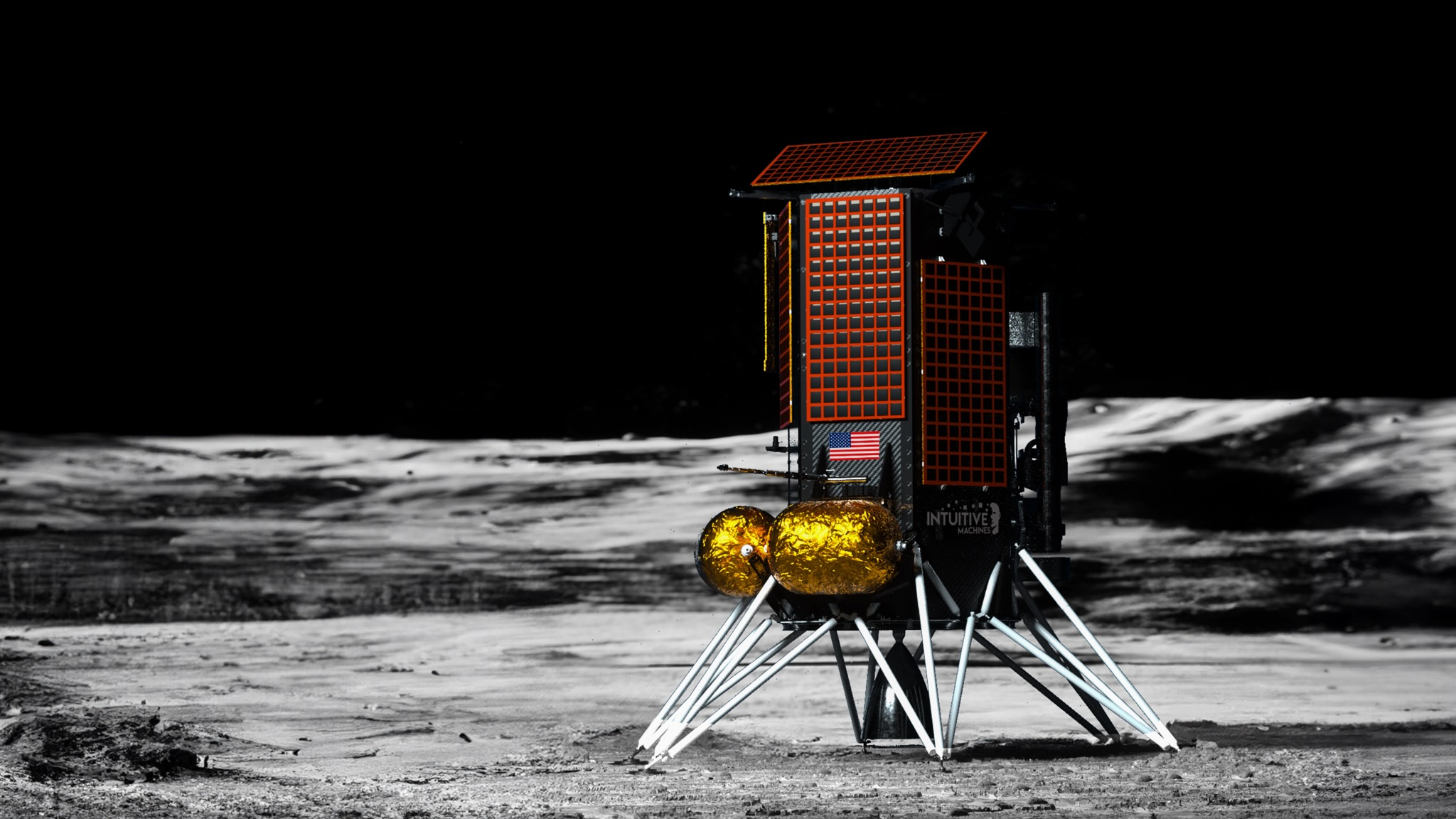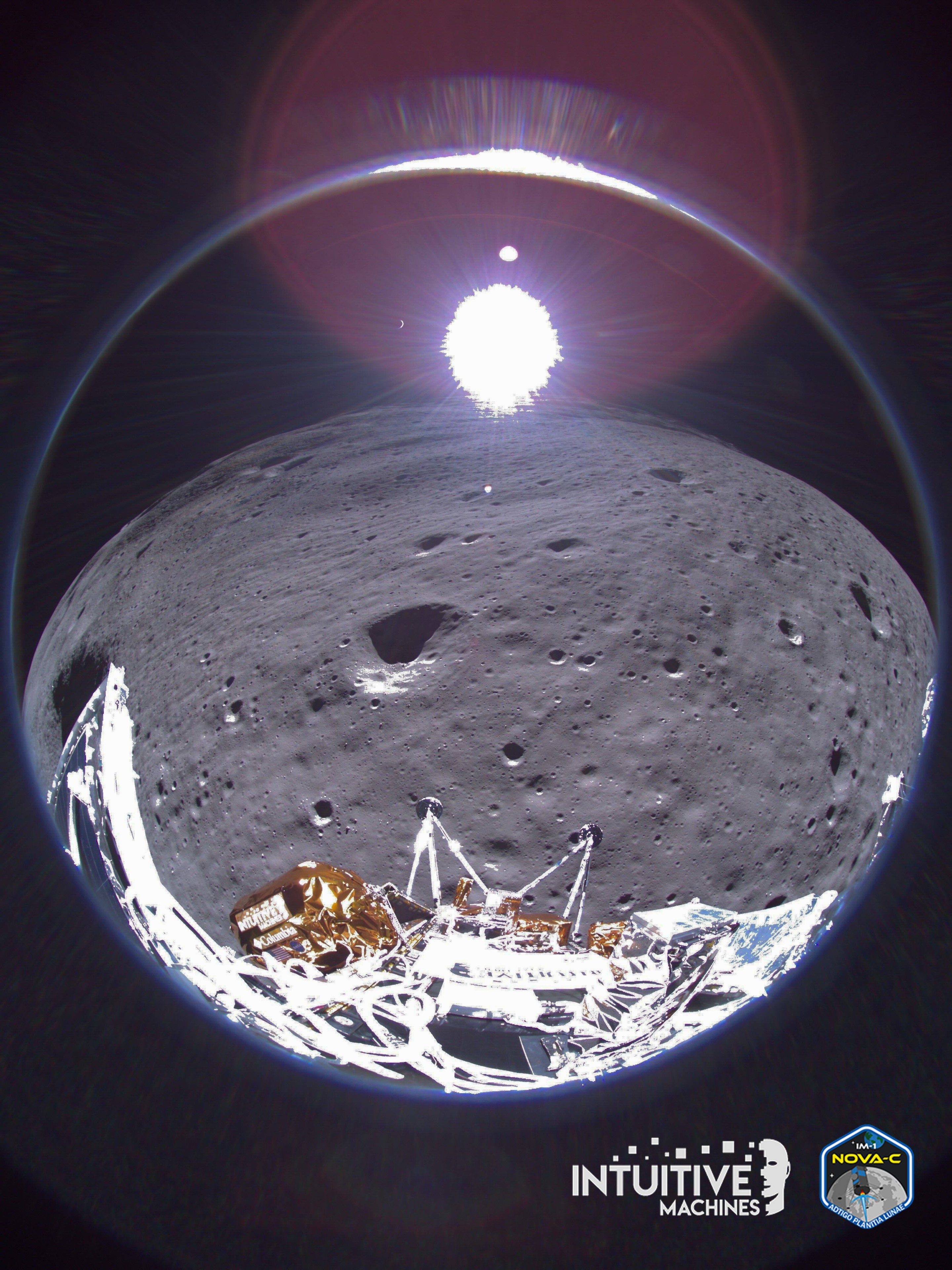
Intuitive Machines just scored a contract for another robotic moon mission.
NASA has awarded the Houston-based company, which earlier this year aced the first-ever private lunar landing, a $116.9 million deal to carry six agency science instruments to the lunar south pole in 2027.
"The instruments on this newly awarded flight will help us achieve multiple scientific objectives and strengthen our understanding of the moon's environment," Chris Culbert, manager of the Commercial Lunar Payload Services (CLPS) program at NASA’s Johnson Space Center in Houston, said in a statement.
"For example, they'll help answer key questions about where volatiles — such as water, ice, or gas — are found on the lunar surface and measure radiation in the South Pole region, which could advance our exploration efforts on the moon and help us with continued exploration of Mars."
Intuitive Machines' first lander, a solar-powered craft called Odysseus, touched down near the moon's south pole this past February. It operated for seven Earth days, the expected duration of its historic surface mission.
The company is gearing up for its second trip to Earth's nearest neighbor; liftoff of the IM-2 mission, atop a SpaceX Falcon 9 rocket, is expected later this year. IM-2 will head toward the south polar region as well; it carries a NASA payload called PRIME-1 (Polar Resources Ice Mining Experiment-1) that will hunt for water ice, which is thought to be abundant in the area.
Intuitive Machines plans to launch the IM-3 moon mission next year. The newly awarded contract will support the company's fourth lunar effort. All of these missions were or will be supported by CLPS, an initiative that seeks to gather a wealth of moon data ahead of the planned arrival of astronauts later this decade via NASA's Artemis program.

The six payloads that will fly on the 2027 mission are expected to weigh a total of about 174 pounds (79 kilograms), NASA officials said. The agency provided the following description of the instruments:
- The Lunar Explorer Instrument for Space Biology Applications will deliver yeast to the lunar surface and study its response to radiation and lunar gravity. The payload is managed by NASA's Ames Research Center in Silicon Valley, California.
- Package for Resource Observation and In-Situ Prospecting for Exploration, Characterization and Testing is a suite of instruments that will drill down to 3.3 feet (1 meter) beneath the lunar surface, extract samples, and process them in-situ in a miniaturized laboratory, to identify possible volatiles (water, ice, or gas) trapped at extremely cold temperatures under the surface. This suite is led by ESA (European Space Agency).
- The Laser Retroreflector Array is a collection of eight retroreflectors that will enable lasers to precisely measure the distance between a spacecraft and the reflector on the lander. The array is a passive optical instrument and will function as a permanent location marker on the moon for decades to come. The retroflector array is managed by NASA’s Goddard Space Flight Center in Greenbelt, Maryland.
- The Surface Exosphere Alterations by Landers will investigate the chemical response of lunar regolith to the thermal, physical, and chemical disturbances generated during a landing, and evaluate contaminants injected into the regolith by the lander. It will give insight into how a spacecraft landing might affect the composition of samples collected nearby. This payload is managed by NASA Goddard.
- The Fluxgate Magnetometer will characterize certain magnetic fields to improve the understanding of energy and particle pathways at the lunar surface and is managed by NASA Goddard.
- The Lunar Compact Infrared Imaging System will deploy a radiometer – a device that measures infrared wavelengths of light – to explore the moon's surface composition, map its surface temperature distribution, and demonstrate the instrument's feasibility for future lunar resource utilization activities. The imaging system is managed by the Laboratory for Atmospheric and Space Physics at the University of Colorado at Boulder.







